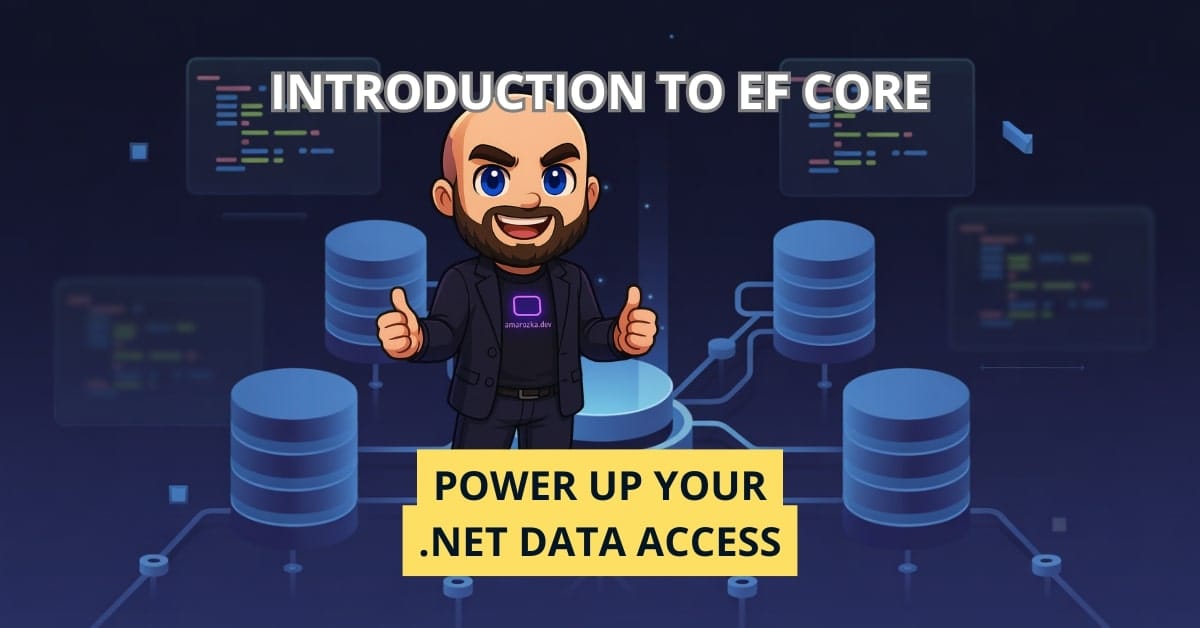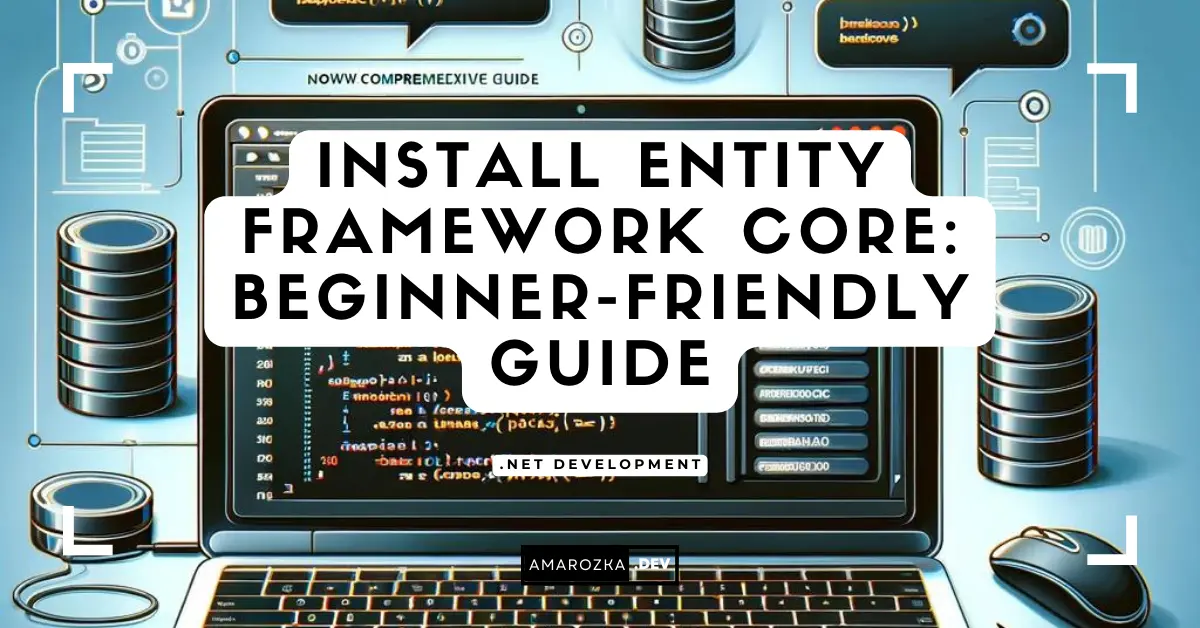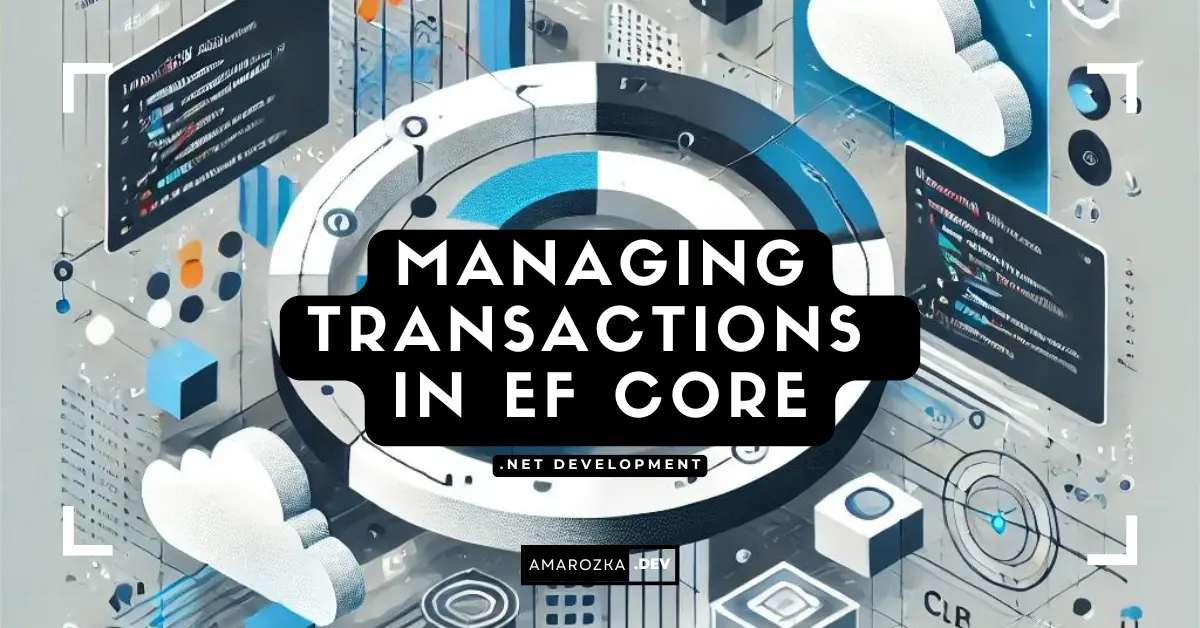Think you already know how databases work in .NET? Think again! Entity Framework Core (EF Core) isn’t just “another ORM” — it’s a powerhouse tool that can transform how you design, query, and manage your data.
Whether you’re building a simple blog or a high-availability enterprise app, mastering EF Core will save you hundreds of hours and help you future-proof your solutions. Let’s uncover how EF Core can become your secret weapon in .NET development!
Introduction to Entity Framework Core
Entity Framework Core (EF Core) is a lightweight, extensible, open-source, and cross-platform version of the popular Entity Framework data access technology. It is designed for .NET Core and .NET 5/6/7/8 applications, helping developers interact with databases using strongly typed C# classes rather than raw SQL queries.
EF Core offers database-agnostic development, ensuring that your business logic remains separate from your data persistence layer. This separation leads to cleaner, more maintainable, and scalable codebases.
Why Should You Care?
- Eliminate repetitive boilerplate code.
- Easily switch databases with minimal changes.
- Work with async patterns for better performance.
Advantages of EF Core over Other ORM Tools
Seamless Integration with .NET
Designed by Microsoft, Entity Framework fits naturally into the .NET ecosystem, using familiar patterns like Dependency Injection, configuration providers, and logging abstractions. Integration with ASP.NET Core is practically frictionless.
Cross-Platform Compatibility
No more “it only works on Windows” issues. EF Core runs on Linux, macOS, and Windows equally well. This means your applications can be containerized using Docker and deployed to Kubernetes clusters without database access issues.
High Performance
Major architectural improvements have made EF Core much faster than older ORMs, especially with:
- Compiled queries that minimize runtime parsing.
- Batching of commands to reduce round-trips.
- Connection pooling for high throughput.
- Asynchronous I/O for better scalability in web apps.
Advanced Migrations and Schema Management
You can easily evolve your database schema using EF Core migrations without losing data. Migrations can also be customized through Fluent API to fine-tune how tables, indexes, and keys are generated.
# Example migration commands
Add-Migration InitialCreate
Update-DatabaseExplanation:
Add-Migrationgenerates C# code for database changes.Update-Databaseapplies them to your actual database.
Migrations also support data seeding, automatic history tracking, and versioning control.
Extensive Database Provider Support
Work with SQL Server, PostgreSQL, MySQL, SQLite, Cosmos DB, Oracle, and even in-memory databases for testing. Each provider adds provider-specific optimizations without altering your core domain model.
Powerful Query Capabilities with LINQ
Write queries in LINQ (Language Integrated Query), keeping everything type-safe, IntelliSense-supported, and easily testable.
var students = await _context.Students.Where(s => s.IsActive).ToListAsync();Explanation: Retrieves all active students asynchronously, leveraging EF Core’s optimized SQL generation engine.
Basic Architecture and Components of EF Core
Understanding EF Core’s architecture is crucial to leveraging its full potential. Here’s a breakdown of the main parts, with detailed examples:
DbContext
The “brain” that coordinates database interactions. It represents a session with the database, allowing CRUD operations.
public class AppDbContext : DbContext
{
public DbSet<Student> Students { get; set; }
protected override void OnConfiguring(DbContextOptionsBuilder options)
=> options.UseSqlServer("Server=myServer;Database=myDb;User Id=myUser;Password=myPass;");
}Explanation: OnConfiguring sets up the database provider and connection string.
Usage Example:
await using var context = new AppDbContext();
var students = await context.Students.ToListAsync();Explanation: Creates a new context, fetches all students asynchronously, and disposes it properly.
DbSet
Represents a table or collection of entities. It’s your entry point to querying and persisting entity instances.
public DbSet<Student> Students { get; set; }Example:
_context.Students.Add(new Student { Name = "John Doe", IsActive = true });
await _context.SaveChangesAsync();Explanation: Adds a new student record to the Students table.
Model
Defines how your C# classes map to database tables. You can configure the model using Data Annotations or Fluent API.
Using Data Annotations:
public class Student
{
public int Id { get; set; }
[Required]
[MaxLength(100)]
public string Name { get; set; }
}Explanation: Marks Name as required with a maximum length constraint.
Using Fluent API:
protected override void OnModelCreating(ModelBuilder modelBuilder)
{
modelBuilder.Entity<Student>()
.Property(s => s.Name)
.IsRequired()
.HasMaxLength(100);
}Explanation: Alternative way to enforce field requirements via code configuration.
Query Processing
Entity Framework Core translates LINQ queries into SQL expressions.
var activeStudents = await _context.Students.Where(s => s.IsActive).ToListAsync();Explanation: Entity Framework Core dynamically generates SQL for the database from your LINQ expressions.
Advanced Example:
var studentsWithCourses = await _context.Students
.Include(s => s.Courses)
.Where(s => s.IsActive)
.ToListAsync();Explanation: Eagerly loads related Courses for each active student.
Change Tracking
EF Core monitors changes made to retrieved entities and persists those changes automatically.
var student = await _context.Students.FindAsync(1);
student.Name = "Updated Name";
await _context.SaveChangesAsync();Explanation: EF Core detects the name update and executes the appropriate UPDATE statement.
Disable Change Tracking for Read-Only Operations:
var readOnlyStudents = await _context.Students.AsNoTracking().ToListAsync();Explanation: No overhead for change tracking when only reading data.
Migrations
Migrations allow schema evolution without data loss.
Creating a Migration:
Add-Migration AddEmailToStudentApplying a Migration:
Update-DatabaseExample Migration Code:
protected override void Up(MigrationBuilder migrationBuilder)
{
migrationBuilder.AddColumn<string>(
name: "Email",
table: "Students",
nullable: true);
}Explanation: Adds a new Email column to the Students table.
Seeding Initial Data:
modelBuilder.Entity<Student>().HasData(
new Student { Id = 1, Name = "Admin", IsActive = true }
);Explanation: Seeds a default record into the database during migration.
Database Providers
Entity Framework Core is provider-agnostic and easily switchable.
Example for PostgreSQL:
optionsBuilder.UseNpgsql("Host=my_host;Database=my_db;Username=my_user;Password=my_pw");Switching to SQLite:
optionsBuilder.UseSqlite("Data Source=mydb.db");Explanation: Just change one line in your configuration to work with a different database backend.
Hands-on Examples Using EF Core
Creating Records
var student = new Student { Name = "Alice", IsActive = true };
_context.Students.Add(student);
await _context.SaveChangesAsync();Explanation: Adds a new student and saves changes to the database.
Reading Records
var students = await _context.Students.ToListAsync();Explanation: Fetches all students.
Updating Records
var student = await _context.Students.FirstOrDefaultAsync(s => s.Id == 1);
student.Name = "Bob";
await _context.SaveChangesAsync();Explanation: Updates the student’s name and persists the change.
Deleting Records
var student = await _context.Students.FindAsync(1);
_context.Students.Remove(student);
await _context.SaveChangesAsync();Explanation: Deletes a student record.
Querying with LINQ
var activeStudents = await _context.Students.Where(s => s.IsActive).OrderBy(s => s.Name).ToListAsync();Explanation: Retrieves active students and sorts them by name.
Best Practices and Tips for Using EF Core
- Use Lazy Loading carefully: Prefer explicit
Include()when possible. - Prefer No-Tracking queries for reads: Improves performance significantly.
- Validate models: Ensure your data is correct before saving.
- Handle concurrency properly: Use optimistic concurrency tokens.
- Optimize your queries: Fetch only necessary fields.
- Dispose of DbContext properly: Always.
- Keep migrations organized: Group them by feature or module.
FAQ: Common EF Core Questions
Yes, easily through multiple DbContexts or different connection strings.
Absolutely. EF Core scales well with features like compiled queries and connection pooling.
Yes. Understanding SQL fundamentals will make you a stronger EF Core developer.
Use eager loading with .Include() to load related data efficiently.
Conclusion: Why EF Core Should Be in Your Developer Toolkit
Entity Framework Core is no longer just “a nice ORM option” — it is a game-changer. It accelerates development, improves code quality, and future-proofs your applications.
Start integrating EF Core into your next project and experience how it makes database access seamless and maintainable!
Have you faced a tricky EF Core challenge recently? Drop a comment below — let’s tackle it together!
- Install EF Core Fast: Step-by-Step Beginner’s Guide
- Entity Framework Data Annotations & Fluent API Configuration
- Introduction to EF Core: Power Up Your .NET Data Access
- EF Core Global Filters: Soft Delete & Multi‑Tenant Guide
- EF Core Transactions Guide & Code Examples (2025)




